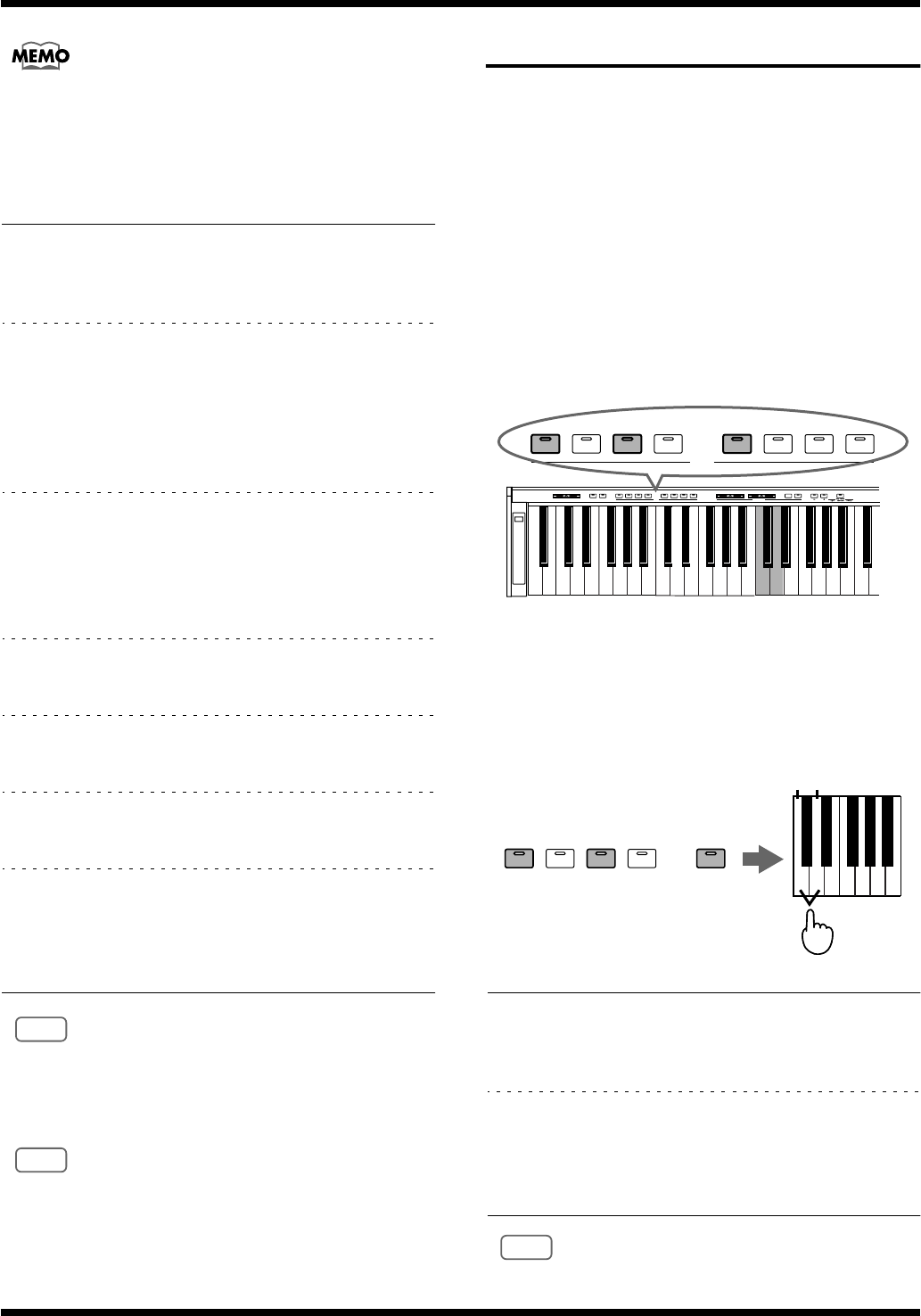
29
Convenient Functions
When you want to perform using a tuning other than equal
temperament, you’ll need to specify the keynote (tonic for
major, sixth for minor) appropriate for the key of the song
you want to play.
Key Temperament Description
C4
Equal With this tuning, the octave is divided
into twelve equal intervals. Regardless
of the interval, very little ambiguity is
produced.
D4
Pythagorean Developed by the philosopher
Pythagoras as a method of tuning that
resolved the ambiguousness of fourths
and fifths. As a result, melodies sound
cleaner, but a certain amount of
ambiguousness is produced with
triads.
E4
Just Major This tuning eliminates the
ambiguousness of fifths and thirds.
This tuning is not suitable for melodies,
and transposition is impractical, but
rich sonorities can be produced by
chords.
F4
Just Minor Just Major and Minor tunings are
different. You can get the same effects
in the minor scale as in the major scale.
G4
Mean Tone A partial compromise of the Just Major
tuning, created to make transposition
possible.
A4
Werckmeister A combination of the Mean Tone and
Pythagorean tunings. This tuning can
be used in all keys.
B4
Kirnberger As a result of improvements made to
the Mean Tone and Just temperaments,
it is relatively tolerant towards
transposition, and can be used to play
in all keys.
NOTE
When performing in ensemble with other instruments, be aware
that depending on the key, there may be some shifting of the pitch.
Please tune to the other instruments in the ensemble.
NOTE
When you play back a recorded performance, it will be played using
the temperament that was selected at that time.
Changing Tuning Curves
Pianos are commonly tuned so pitches in the lower registers
are adjusted relatively flat, and pitches in the higher registers
are tuned sharper compared to equal temperament. This
kind of tuning method for the piano is called “Stretch
Tuning.”
The graphic representation of the differences in pitch when
comparing equal-tempered tuning with the actual tuning
used is called the “Tuning Curve.” Changing the tuning
curve results in a subtle change in the sound of the chords.
MP-500 can switch the tuning curve.
“Type 2” (Stretch Tuning) is the power-on default for the
tuning curve.
fig.7-10
While holding down the [Piano 1] button,
[Electric Piano 1] button, and [Harpsichord]
button, the “C3” note to turn the setting
Type 1, or press the “D3” note to turn the
setting Type 2.
fig.7-11.e
Key Type Description
C3
Type 1 Standard tuning curve. This is the right
choice when using Dual Play (p. 16), or
when playing in ensemble with other
instruments.
D3
Type 2 A tuning curve wherein the low and
high registers are widened slightly—
low pitches are a little lower, the high
pitches a little higher (Stretch Tuning).
Appropriate for piano solos.
NOTE
This setting is only available with piano tones.
Power
Volume
MaxMin
Reverb Chorus StringsPiano 1Piano 2 chord
Harpsi-
phone Organ
Vibra- Pipe
Piano 1
Electric
Piano 2
Electric
120168
Tempo Beat
20840 608096 3 602 4
Play Rec Demo SongSound On/ Off
MetronomeTone
C3 D3
StringsPiano 1 Piano 2 chord
Harpsi-
phone Organ
Vibra- Pipe
Piano 1
Electric
Piano 2
Electric
Tone
Piano 1 Piano 2 chord
Harpsi-
Piano 1
Electric
Piano 2
Electric
Type 2Type 1
C3
Press one of these keys
D3
While holding down three buttons
MP-500.e.book 29 ページ 2003年6月11日 水曜日 午前9時46分


















